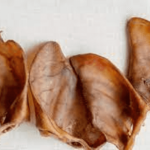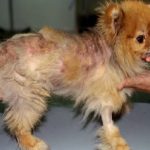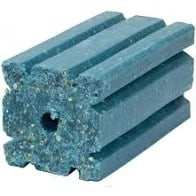
People have been trying to eradicate rodents for thousands of years. We concern ourselves with disease spread, eating our crops, leaving droppings and making nests in our homes. One way we adress rodent issues is by placing rat or mouse bait. Commercial exterminators can lay this down for you, but rat poison can be obtained in most hardware and grocery stores.
What some folks don’t realize, is that rat bait can pose a threat to pets as well as children of the family. Research continues to create a product that fits this bill but in the meantime be aware of the signs of rat poisoning, particularly if your pet travels with you to places outside the home where bait may be left out.
There are several types of rodenticides available. The traditional products are called anticoagulant rodenticides and are discussed here. If you intend to use a rodenticide, we encourage you to choose this type over others as there is a readily available antidote (treatment) for the anticoagulant rodenticides. Other rodenticides are more toxic and no antidote or reasonable treatments are available. Common anticoagulant rodenticides are: brodifacoum, dopaquinone, warfarin and bromadiolone.
The other two types of poisons cause neurological signs that can be fatal and / or cause calcium phosphorous (or bone) formation in the organs, especially the kidneys. Both of these toxins are lethal with the first having no antidote and the second, requiring up to 2 months of intensive care treatment, which is beyond the financial means of most companion owners as well as likely irreversible kidney damage.
Almost all of the rat/mouse toxins are similar in appearance – they have green dyes for a characteristic appearance; however, dogs and cats have poor color vision and to them these pellets may look like kibbled pet food.
Anticoagulant rodenticides do not produce signs of poisoning for 2-3 days after the toxic dose has been consumed. Anticoagulant rodenticides cause internal bleeding. A poisoning victim will show weakness and pale gums but in the beginning, bleeding will likely not be obvious externally.
Symptoms of anti-coagulant rodenticides:
Most of the time external bleeding is not obvious and you only notice the pet is weak and/or cold. If you look at the gums, they are pale. Sometimes bloody urine or stool is evident or nose bleeds may be seen. Signs of bleeding in more than one body location are a good hint that there is a problem with blood coagulation and appropriate testing and treatment can be started.
As bleeding progresses, hemorrhage occurs around the lungs and respiratory distress is noted. As soon as symptoms are seen or bait ingestion is noticed, your pet should be taken to a veterinarian. Before symptoms are seen, your pet can be treated with vitamin K1 which will restore clotting abilities.
If symptoms have started, your pet will require a plasma transfusion to replace the clotting proteins that vitamin K1 activate. And simultaneously, vitamin K1 therapy will begin.
Once symptoms begin, the severity of the bleed is pronounced and immediate and aggressive treatment is required.
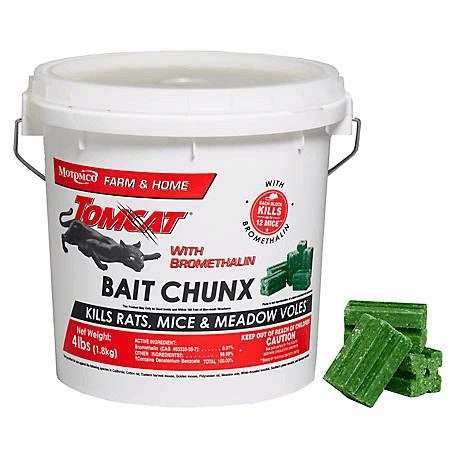
Testing
Blood clotting tests called the PTT (partial thromboplastin time) and PT (prothrombin time) should be done at the veterinarian’s facility along with other labwork to see if your pet is becoming anemic or suffering from other effects of poor ciculation.
X-rays may also be needed to see if bleeding into the lungs or abdomen have started.
Another test called the PIVKA (Proteins Induced by Vitamin K Antagonism) is also helpful and can be used to see if your pet is suffering from anti-coagulant rat bait ingestion.
Therapy
If the patient has only just ingested the poison, he or she may be made to vomit it up. Cathartics and adsorbents such as charcoal can be used to prevent the poison from entering the patient’s system. Still, it is best to use the antidote anyway. Certainly, if there is evidence that the patient is bleeding, the antidote obviously is required.
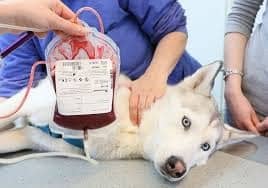
Vitamin K can be started as an injectuion if the pet is too sick to eat. If recently ingested, oral tablets will often be used instead. Plasma and red blood cell transfusions may be needed to stabilize a patient who has suffered significant blood loss.
There are different classes of anticoagulant rodenticides and they remain in the body for several weeks. It is hard to know when to discontinue therapy, especially if the particular rodenticide is not known.
Depending on the bait ingested, medication will last for 2-4 weeks. Forty-eight hours later a PT test is run. If there is still rodenticide in the patient’s system, the PT will abnormal but the patient will not yet have started to bleed. The results of the PT test will tell the veterinarian whether or not another couple of weeks of vitamin K are needed.
It is important to return for the recheck clotting test such as the PT test on schedule. Waiting an extra day or two will allow internal bleeding to recur.
When the PT test has returned to normal, it is safe to discontinue therapy.
Don’t purchase Vitamin K over the counter!
Vitamin K1 Vs. Vitamin K2 Vs. Vitamin K3
There are three forms of vitamin K but only vitamin K1 is used therapeutically. Vitamin K1 is a natural form of vitamin K that is found in plants and absorbed nutritionally. Its more technical name is phylloquinone. Vitamin K2 (menaquinone) is also natural and is produced by the body’s intestinal bacteria but apparently not in amounts adequate for rescue from the anticoagulant rodenticides. Vitamin K3 (menadione) is a synthetic version that may be injected or taken orally. You may even see it available as a vitamin supplement tablet.
Within the body vitamin K1 and vitamin K3 are converted to vitamin K2. Vitamin K3 might seem like an inexpensive way to treat a pet with rat poisoning but unfortunately, K3 is sometimes toxic and can actually lead to red blood cell destruction.
Inexpensive vitamin K3 pills on the drugstore shelf for over-the-counter sale are not acceptable antidotes. Vitamin K1 is used because it is absorbed early in the GI tract and concentrates directly in the liver, which is where the serine proteases are activated. It is only vitamin K1 which should be considered to be the antidote for anticoagulant rodenticide poisoning.
Other Rodenticides:
While anticoagulant rodenticide poisoning is a life-threatening event, at least there is an antidote readily available. As mentioned earlier, other rodenticides are not as readily reversed. These rodenticides include:
- Quintox, Rat-B-Gone or TomCat Bromethalin
- Strychnine, gopher bait
- Zinc phosphide, gopher bait
- TomCat Cholecalciferol (calcium / phosphorous promoting)

